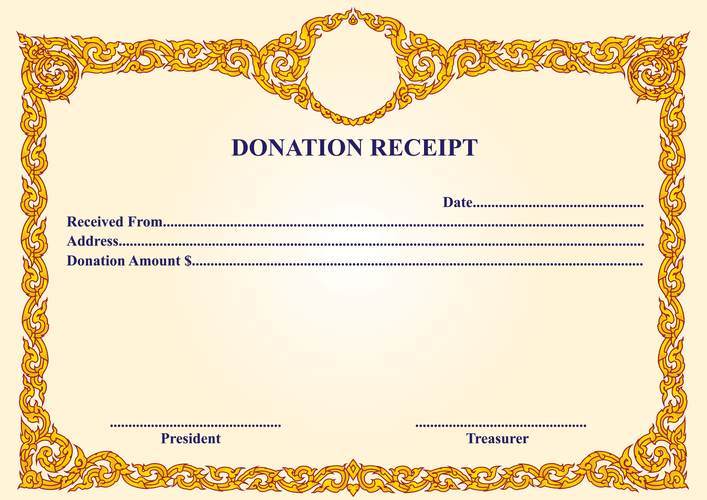
Effective contribution accounting is essential for Bookkeeping for Startups nonprofit success, requiring diligence, transparency, and continuous improvement to build donor trust and ensure financial sustainability. In addition, contribution accounting provides valuable insights for strategic planning and decision-making. By analyzing donation trends and patterns, nonprofits can better understand their funding sources and optimize their fundraising strategies. This data-driven approach enables organizations to allocate resources more efficiently and achieve their mission more effectively.
How to account for free assets received under IFRS
Nonprofits need to be familiar income summary with and adhere to these regulations to ensure they remain in good legal standing within their operating jurisdictions. To establish the fair market value of non-cash contributions, a nonprofit must assess what the donated item or service would sell for in the open market. The condition, utility, and presence of a willing buyer and seller are factors which must be considered. Common resources for determining this value include online marketplaces, thrift stores, and commercial inventory lists. Recording in-kind donations accurately involves a systematic approach that ensures compliance with financial reporting standards and provides transparency for stakeholders.
- Comprehensive training for staff and shrewd management of volunteer contributions are indispensable for ensuring accuracy and compliance.
- For example, a therapeutic horseback riding organization has free use of two horses which they value at $20,000 per year.
- In these cases, you may wish to value them based on the Independent Sector’s rates for volunteer labor and record the value separately to this account.
- GAAP guides nonprofits in properly recognizing, measuring, and disclosing promises to give.
- Continuous training ensures that staff are knowledgeable about current accounting practices, regulatory requirements, and effective use of accounting tools.
Open Fund Financial Statements sub menu
As a result, if in 2025 a city donates a building or cash to a company, the company likely must include it in taxable income. The flip side is that the company then gets a basis equal to that value and can depreciate the building or equipment fully for tax purposes (and perhaps use bonus depreciation or other incentives on it). Essentially, the tax law shifted from “exclude it but no depreciation” to “tax it now but allow depreciation”. This change aligns the treatment of donated assets more closely with purchased assets from a tax perspective – at the cost of immediate tax liability on the gift. Under GAAP, all contributions received should be recorded as revenue upon receipt, including in-kind donations.
Mastering Contribution Accounting: Essential Strategies for Recording and Recognizing Nonprofit Donations
- Nonprofits treat donated assets as incoming resources to be depreciated like any other asset (though only for book purposes, not tax).
- ABC engaged in the following transactions during the year ending December 31, 2019.
- Some nonprofit organizations may erroneously classify this revenue as investment income or a capital gain, but this is not the case.
- A non-cash contribution should be recorded as an increase in the appropriate asset account and as contribution revenue.
- This means a donated piece of equipment or building will appear on the balance sheet at value, and an appropriate portion of its value is expensed each year as depreciation.
For example, an example of an increase in service capacity is a road that is widened to include another lane. An example of an increase in efficiency might be the ability to raise the speed limit of a road due to the addition of entrance or exit ramps. To the extent that a project is partially a betterment, the amount of the betterment should be estimated and capitalized. For ASC 842 implementation, a good place to start is listing all contracts and agreements as of the implementation date. Mark those already identified as a lease, contracts that are clearly service arrangements, and which ones will need further review. For those contracts, apply the five-part test to determine if the lease is a finance or operating lease and whether there are embedded lease components.
Segregation of duties involves dividing responsibilities among different individuals to reduce the risk of errors and fraud in financial processes. If only one of these elements exists, then the contribution will not be deemed conditional. However, if this information is not available, the government can look to industry guidelines for a starting estimate and then revise the estimate as additional information becomes known. The use of another’s estimate should also be adjusted for differences in application, quality, environment, and maintenance practices that may vary amongst the entities. The content of these articles are accurate as of the date noted below each article. NFPs can also make an election not to recognize short-term leases on the balance sheet.
Privacy Policy
In these cases, you may wish to value them based on the Independent Sector’s rates for volunteer labor and record the value separately to this account. This information can be useful for management purposes and for grant applications. In summary, internal controls and auditing are indispensable for accurate contribution accounting in nonprofit organizations. They gaap accounting for donated assets provide the framework and assurance needed to manage donations responsibly, fostering donor confidence and supporting the organization’s mission. Over the years, there has been much confusion about whether to treat certain types of transactions as contributions or as exchanges, especially when they involve government grants. Charities must adhere to all FASB nonprofit accounting changes in order to remain compliant with Generally Accepted Accounting Principles (GAAP).

There may be exceptions, but with strong guidelines, you can set a precedent for measurements and ensure that your statements are transparent and consistent. Be sure you set up in-kind donation accounts in your chart of accounts to cover the types of in-kind donations your organization receives. You may be surprised at how much your organization benefits from in-kind donations. Or perhaps you will be inspired to seek more in-kind gifts when you consider the value to the organization and how easy it can be for donors to help in this way. Nonprofit organizations must carefully manage the tax implications of donations they receive. Contributions can be tax-deductible for donors, which necessitates accurate record-keeping to provide proper receipts and documentation.

Accurate records are vital for generating financial statements and reports that stakeholders, such as donors and regulatory bodies, can trust. Accounting guidance permits the reporting of contributions as either operating or nonoperating revenue. This determination is made based upon what the organization considers to be the nature of its operations. Not-for-profits will be required to provide additional information on the contributions of nonfinancial assets they receive under a new accounting standard issued Thursday by FASB. In-kind donations, also known as non-cash contributions, play a crucial role in supporting nonprofit organizations. These donations come in various forms, including goods like unopened dog food for an animal shelter, or services, such as free legal counsel provided to a community service group.

Construction project manager or discounted construction services:
He works with a variety of small business, investment funds and individual clients. Kim continued on a FlexPath for several years before transitioning to a ClassicPath and taking on leadership responsibilities in 2020. She appreciates the flexibility and support Jones & Roth provides her as her life changes. Kim is a member of the Employee Benefit Audit and Private Company Service teams and focuses on providing assurance and advisory services to these client groups.

Recognizing Donations
In addition to financial accuracy, recognizing donations appropriately fosters donor trust and confidence. Donors expect transparency in how their contributions are utilized, and proper recognition demonstrates the nonprofit’s commitment to ethical practices. Since 1974, our trusted advisors have partnered with nonprofit organizations to navigate every step of the financial journey. At Dugan & Lopatka, our CPAs and consultants are always on the cutting edge of changes in the nonprofit sector. We understand the challenges you face—the special accounting, auditing and reporting requirements of your organization—and we use our deep expertise to deliver exceptional service tailored to your needs.